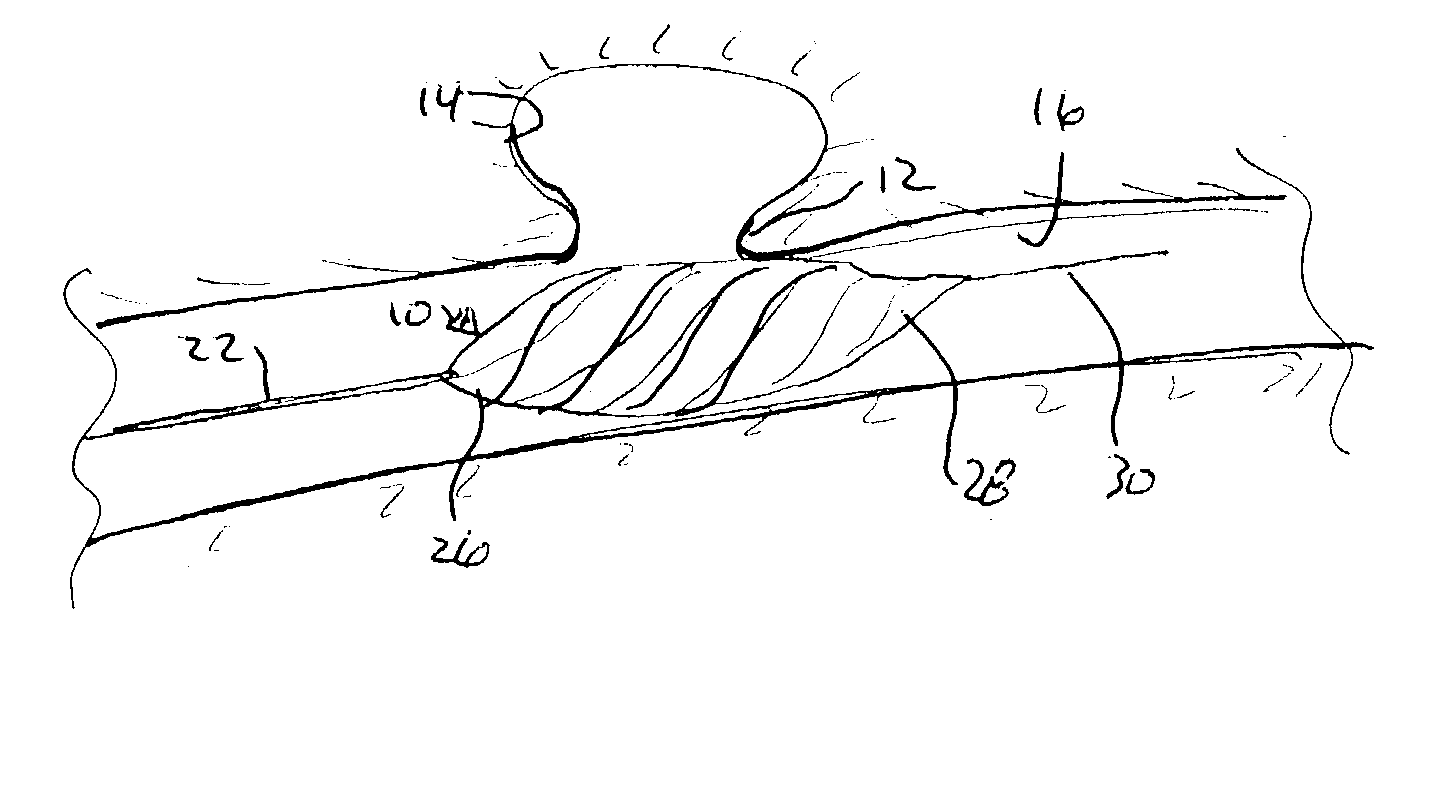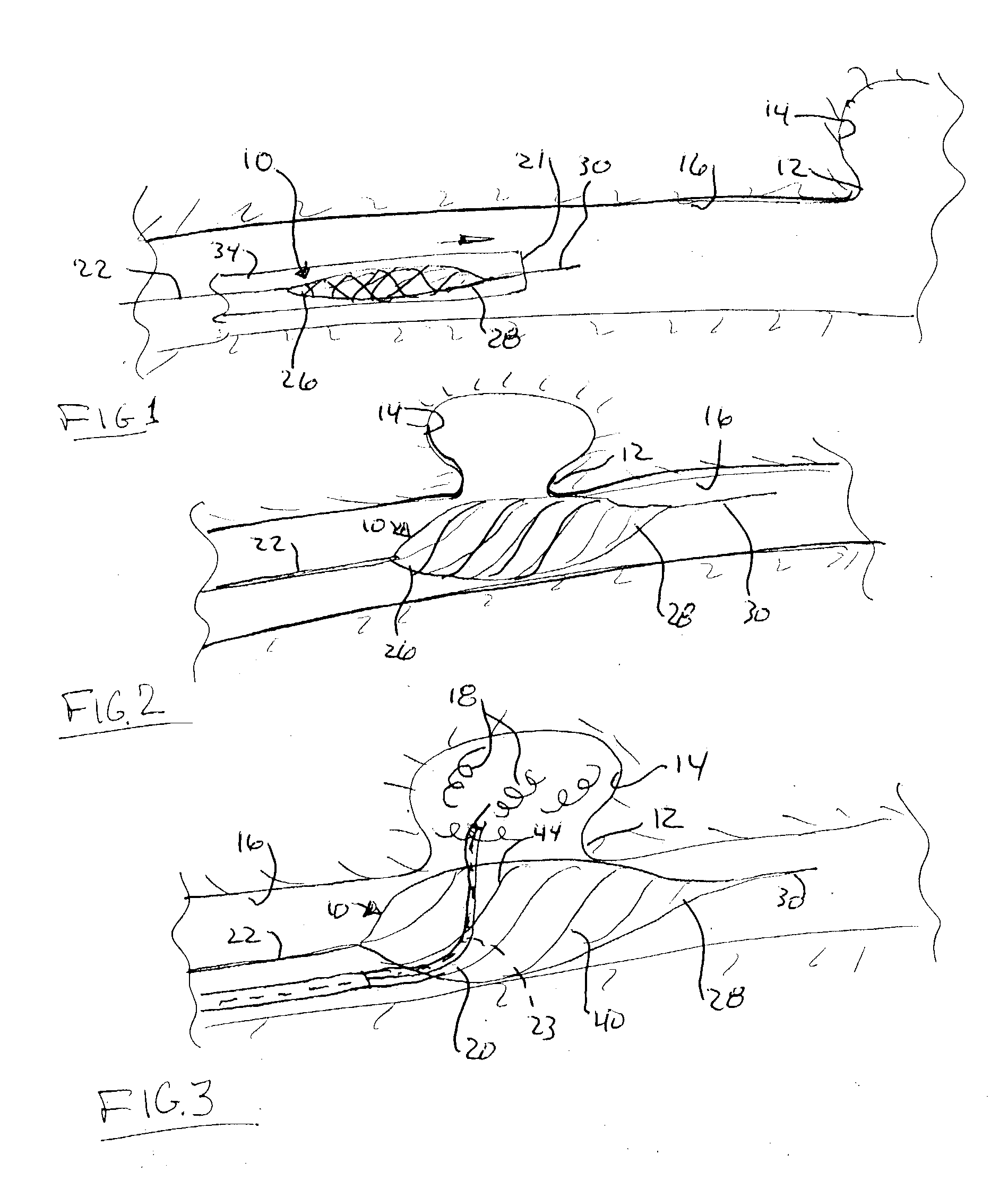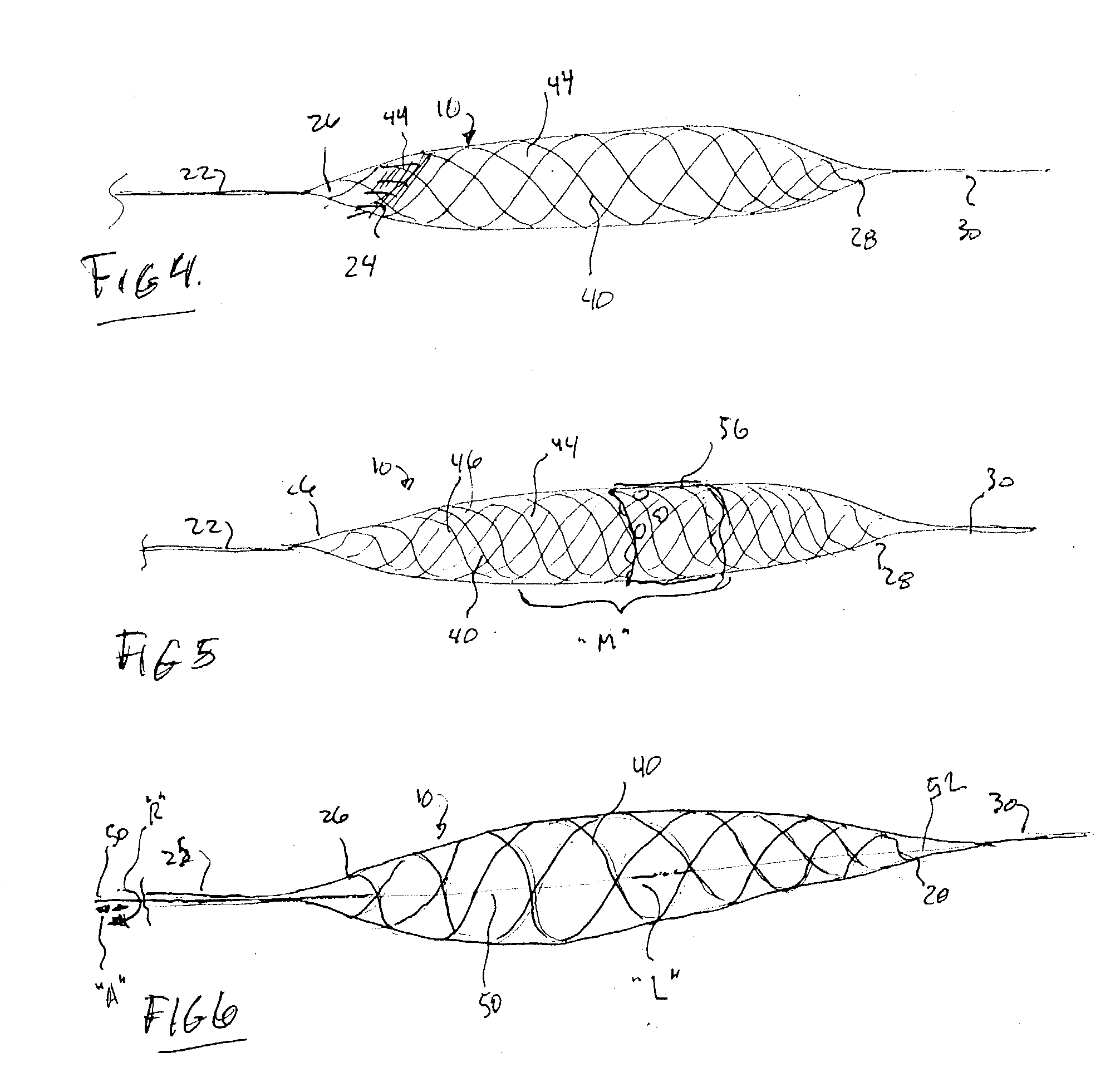Aneurysm buttress arrangement
a technology for aneurysms and scaffolds, applied in the field of aneurysm buttress arrangement, can solve the problems of more thoroughly developed embolus, risk of coil migration out of the entrance zone of the aneurysm and into the feeding vessel, and hemorrhagic stroke, and achieve the effect of facilitating the sliding of the scaffold
- Summary
- Abstract
- Description
- Claims
- Application Information
AI Technical Summary
Benefits of technology
Problems solved by technology
Method used
Image
Examples
Embodiment Construction
[0036] Referring now to the drawings in detail, and particularly to FIG. 1, there is shown the present invention which comprises a method of filling and buttressing an intracranial aneurysm. The method comprises the steps of transluminally positioning a buttress scaffold 10 from an initial unexpanded delivery diameter of for example about 0.018 to about 0.030 inches into an expanded diameter of for example about 2-6 mm across an opening 12 of an aneurysm 14 in an intracranial vessel 16 so as to block off and isolate that aneurysm cavity 14 in a side wall of that vessel 16, as shown in FIGS. 1, 2 and 3. Media such as embolitic agents 18, for example, coils, and or polymers may then be introduced by a further microcatheter 20, into that cavity 14 within the sidewall of the vessel 16, as represented in FIG. 3. The cavity 14 for our description of treatment purposes is of a bulbous shape having a neck portion 12.
[0037] The buttress scaffold 10 is arranged on the distal end of an elonga...
PUM
 Login to View More
Login to View More Abstract
Description
Claims
Application Information
 Login to View More
Login to View More - R&D
- Intellectual Property
- Life Sciences
- Materials
- Tech Scout
- Unparalleled Data Quality
- Higher Quality Content
- 60% Fewer Hallucinations
Browse by: Latest US Patents, China's latest patents, Technical Efficacy Thesaurus, Application Domain, Technology Topic, Popular Technical Reports.
© 2025 PatSnap. All rights reserved.Legal|Privacy policy|Modern Slavery Act Transparency Statement|Sitemap|About US| Contact US: help@patsnap.com



